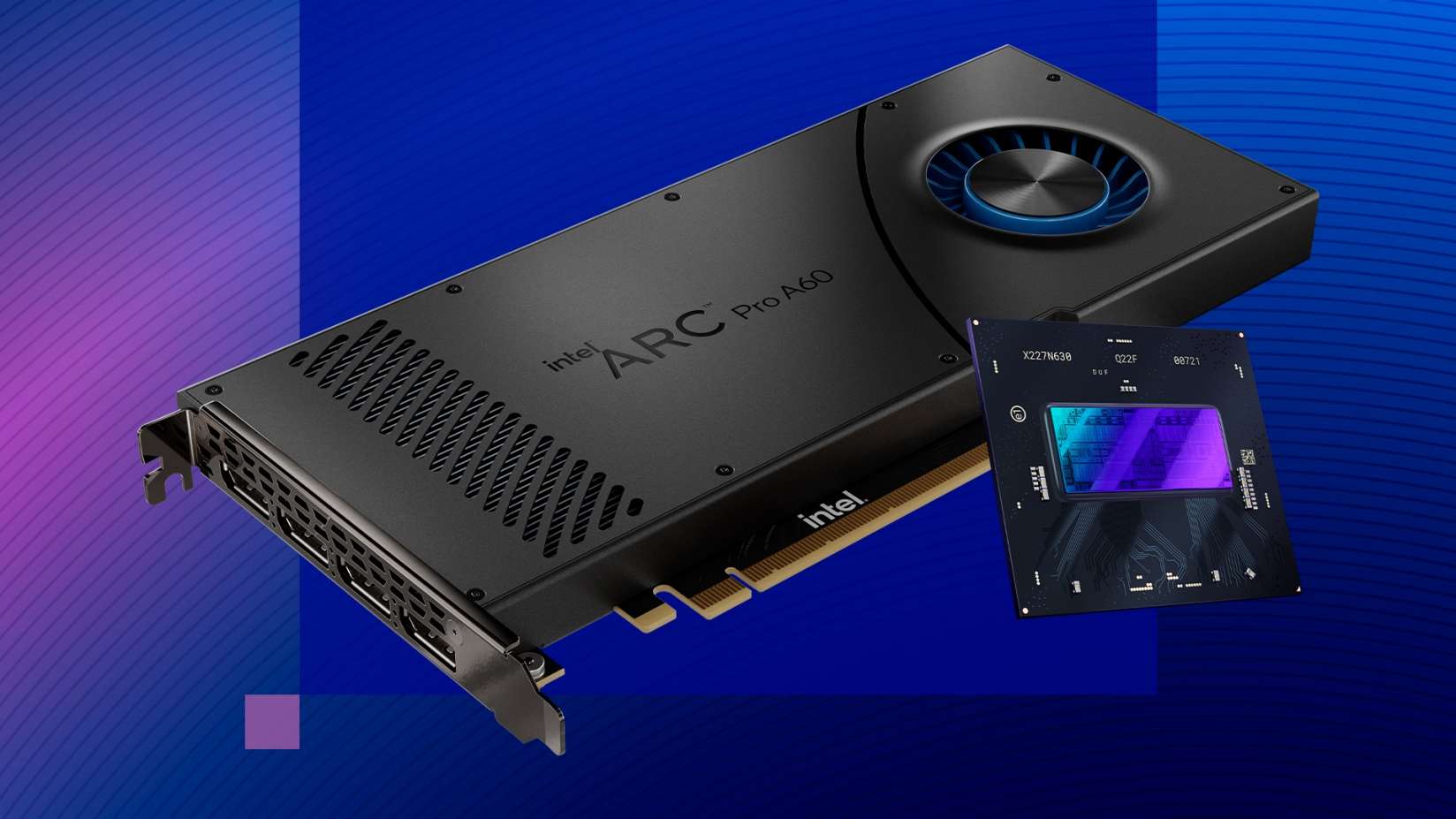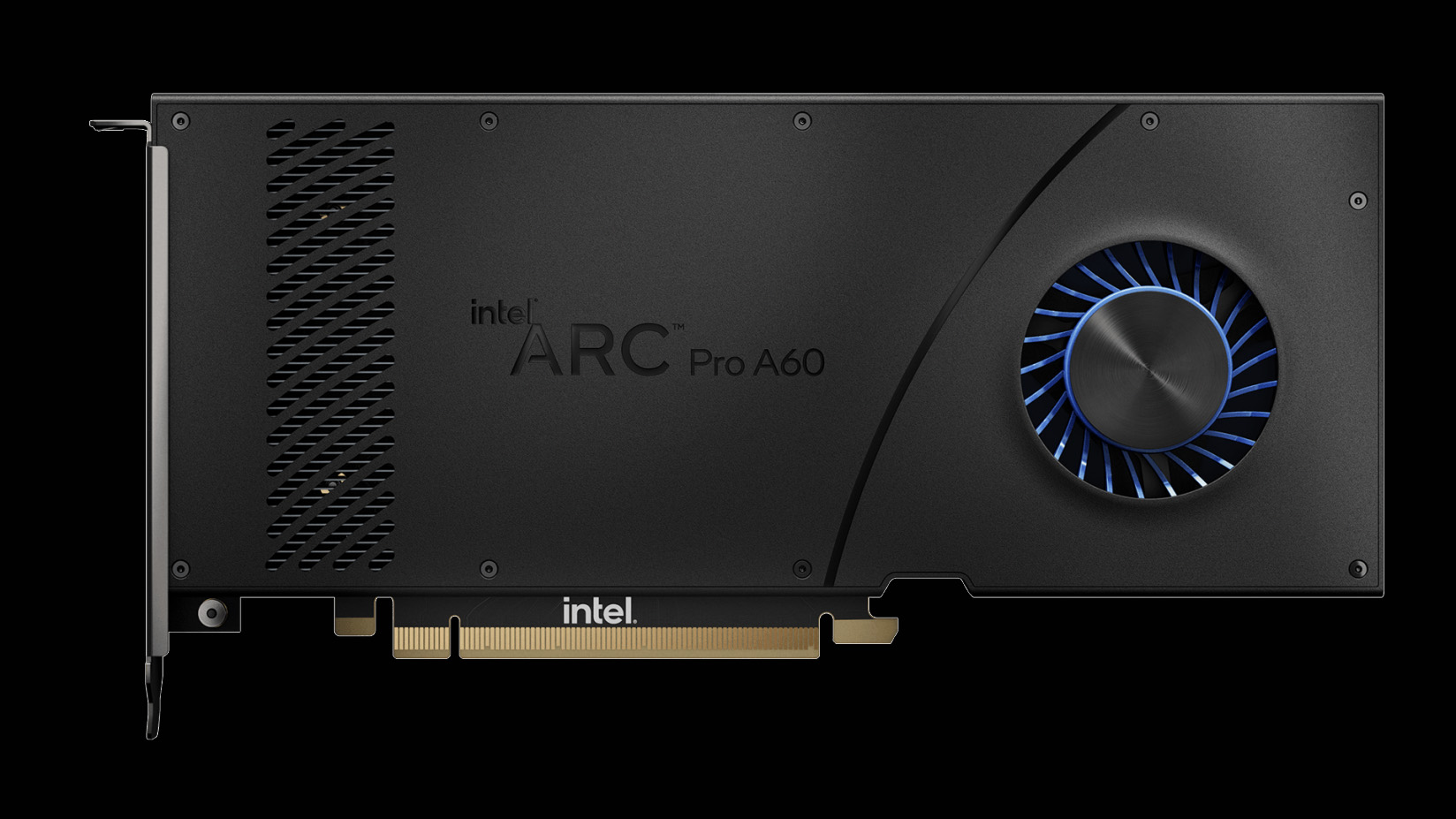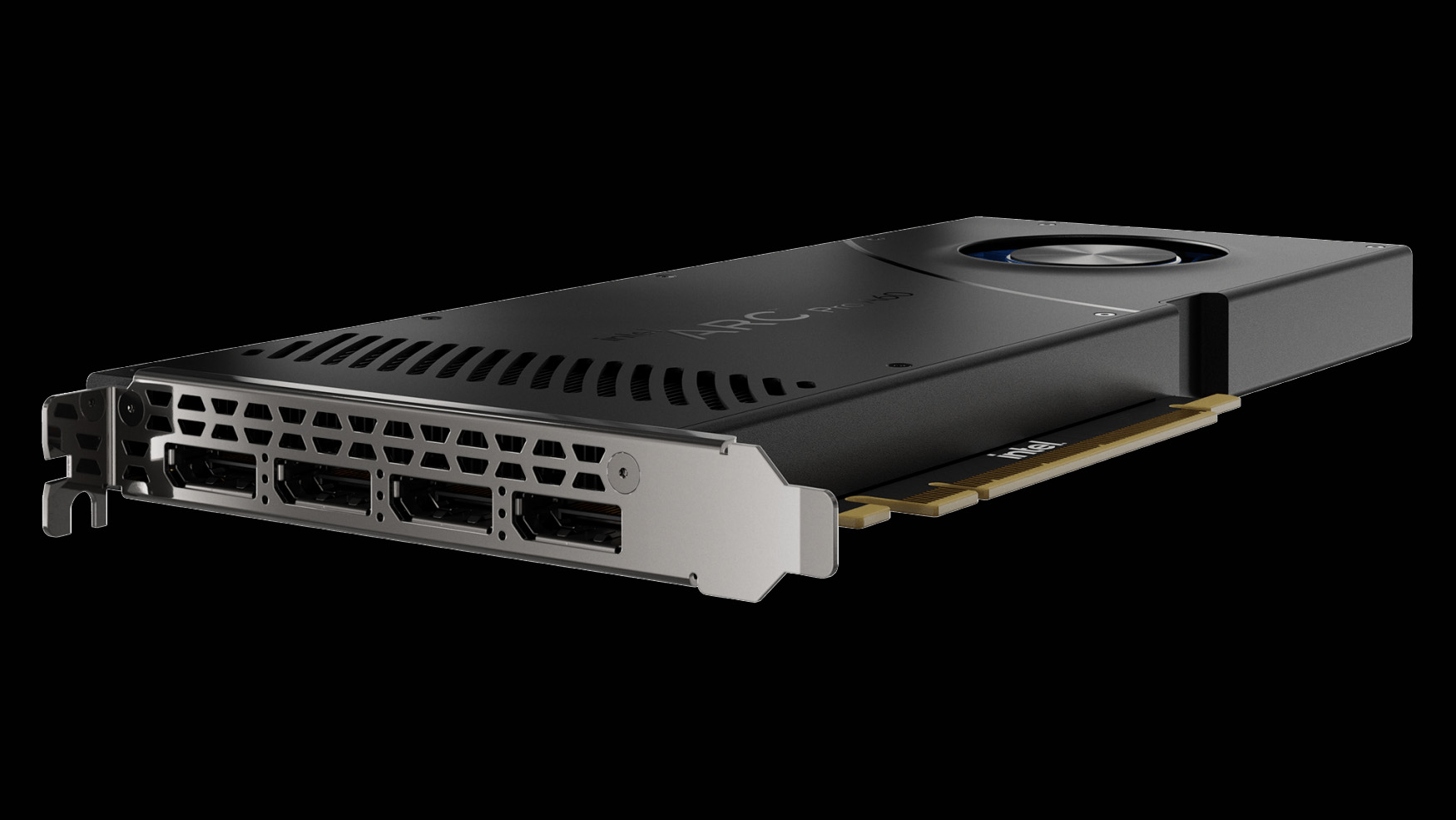
Intel has announced two brand-new Arc Alchemist graphics cards today aimed at the workstation market. The two GPUs consist of the new single-slot Arc Pro A60 desktop card, and the Arc Pro A60M mobile GPU. Both GPUs are currently the fastest workstation solutions that Intel offers, featuring more memory and more GPU cores than the previously released Arc Pro A40 and A50 GPUs.
The Arc Pro A60 comes with 16 Xe Cores, 256 EUs, 16 RT units, and 256 matrix engines, with 12GB of GDDR6 memory operating on a 192-bit bus. That last is an interesting point, as previously only the mobile A730M has offered 12GB of memory. Now there's a desktop alternative.
The mobile A60M features similar specs but has a cut-down memory sub-system from 12GB down to 8GB operating on a 128-bit bus. Power consumption for the A60 peaks at 130W TBP, while the mobile Pro A60M peaks at 95W.
Both GPUs also get an upgrade in PCIe lanes, from 8 PCIe lanes found in previous Pro GPUs to 16. (Yes, that includes the mobile variant, making it one of the few mobile GPUs to support 16-lane configurations). That's because the previous Arc Pro solutions have used the smaller ACM-G11 chip found in the Arc A380 instead of the more potent ACM-G10 chip used in the Arc A770 and Arc A750.
The new Pro A60 meanwhile apparently leverages ACM-G12, an in-between chip that perhaps wasn't even originally planned (considering there wasn't a gap between the G10 and G11). See that chip rendering in the bottom-right of the above image? Yeah, that's neither ACM-G10 nor ACM-G11. Ergo, it's likely ACM-G12, because Intel isn't the type to use a completely fictional image for an announcement like this.

Arguably the best feature of the Arc Pro A60 is the use of a compact single-slot cooling solution. This will make system compatibility a breeze for the Pro A60, allowing it to fit in almost any chassis that don't require half-height form factors. Intel did not provide exact dimensions, but based on some math and the released image, it should be around 242 x 111 x 20 mm.
That's a relatively small card, featuring a "blower-style inspired" cooling design, with a single fan at the rear that exhausts air out the front of the card, as well as through some ventilation ports in the IO bracket.
The card has a textured matte black finish, with glossy characters spelling out the model name. The A60 also sports a full stack of display outputs, with four DisplayPort 2.1 HBM10 (40 Gbps) connectors.

Despite the upgrades Intel has made to PCIe lanes and VRAM, these GPUs won't be particularly fast. Intel's Arc A770 still delivers double the computing power, with 32 Xe Cores at its disposal. And the Arc A770 basically keeps pace with the RTX 3060, sometimes RTX 3060 Ti. That makes the Pro A60 at best an upper entry-level to lower midrange graphics solution.
Still, for users in the lower-tier workstation market, the A60 series should be a competitive offering, with plenty of PCIe bandwidth and VRAM capacity (at least in the case of the desktop card). Most cards in this class, generally offer only four to eight PCIe lanes at best with 4 to 8GB of memory with nearly half the VRAM bus width of the A60. Intel's Arc Pro GPUs also come with workstation-optimized drivers, specifically designed for leading workstation applications like Autodesk, making the A60 an even more incentivizing card.
Intel did not disclose pricing, since it's a workstation card, but the A60 GPUs will be available from Intel-authorized distributors in the coming weeks, while the mobile variant will be available in mobile systems in the next several months. We've heard at least one rumor (via HotHardware who references HardwareLuxx) that it could cost $175. That would be a great value, if other features are up to snuff, considering Nvidia's previous generation RTX A2000 12GB costs $637.







